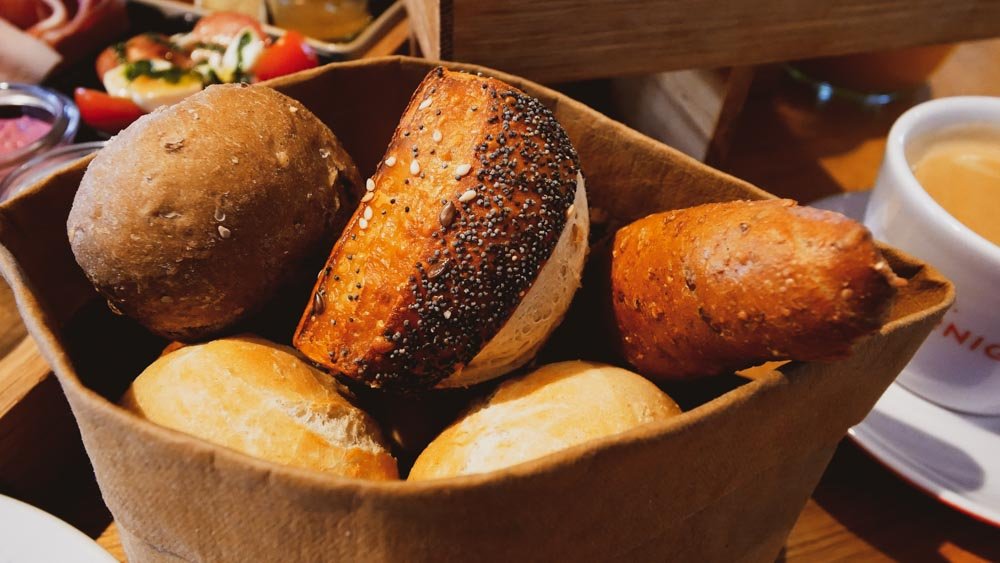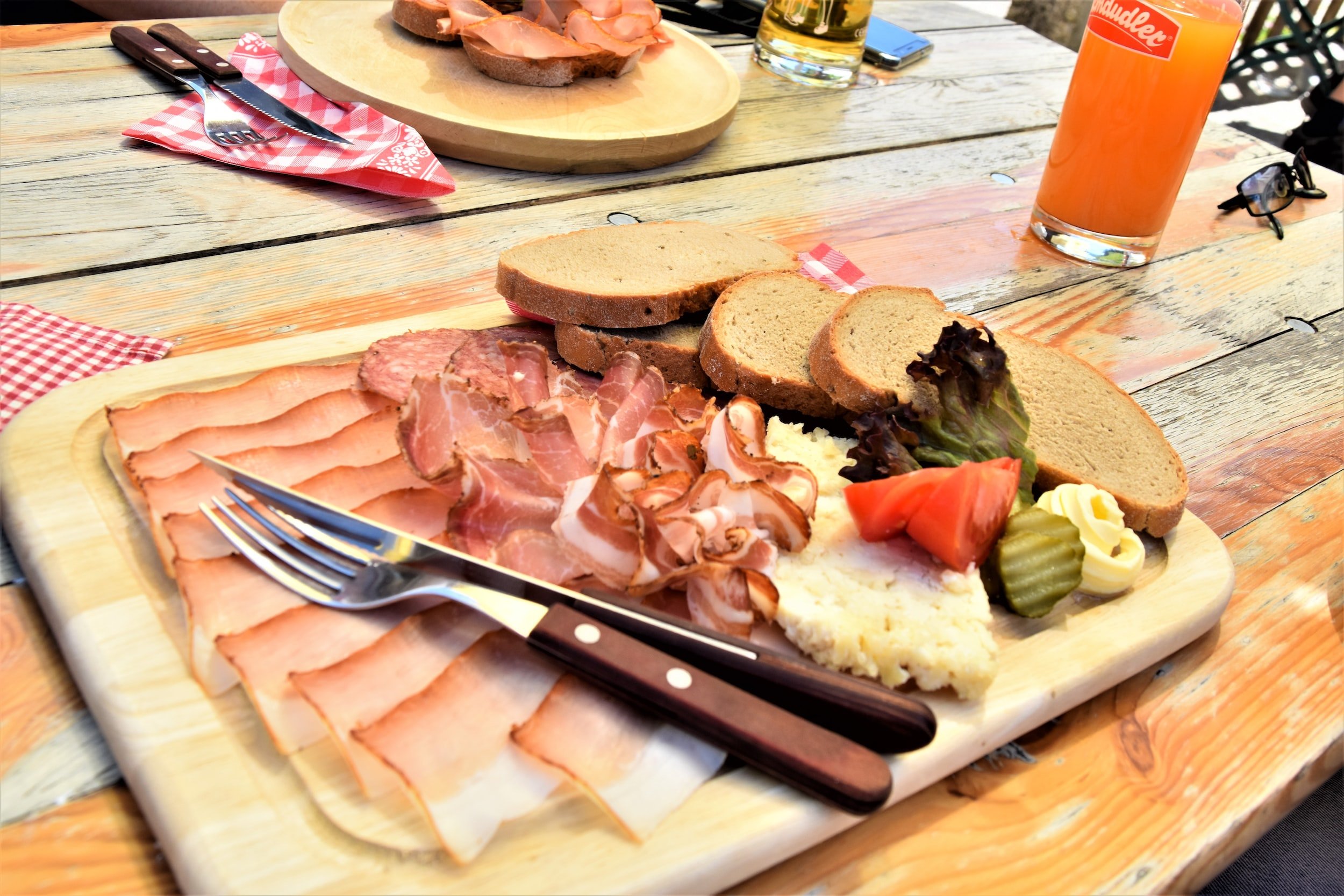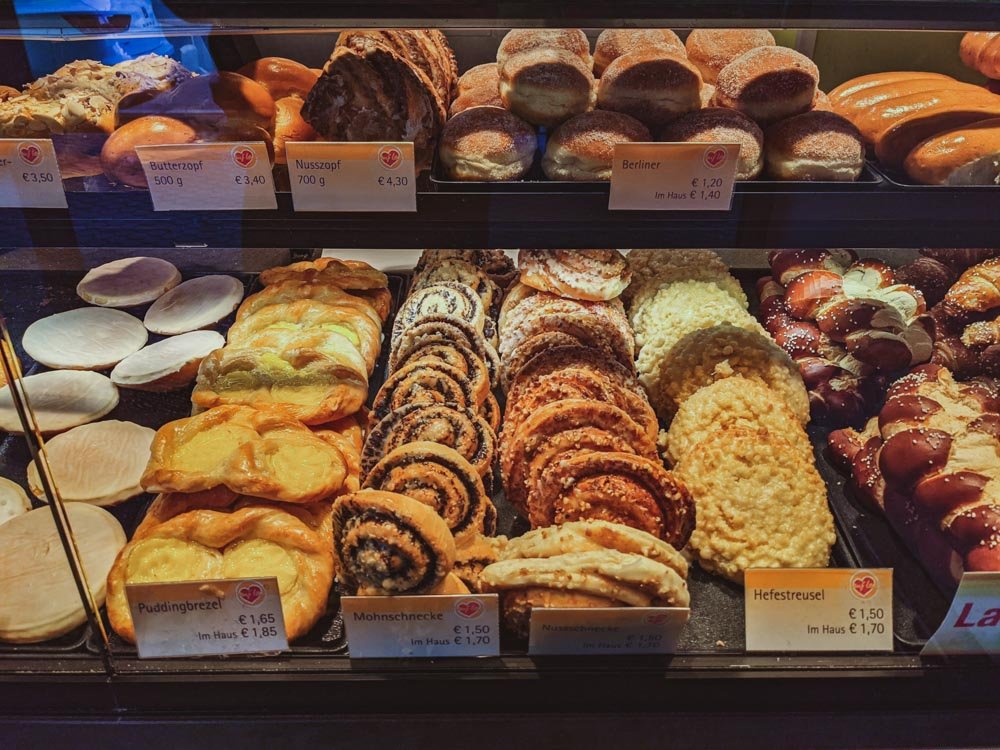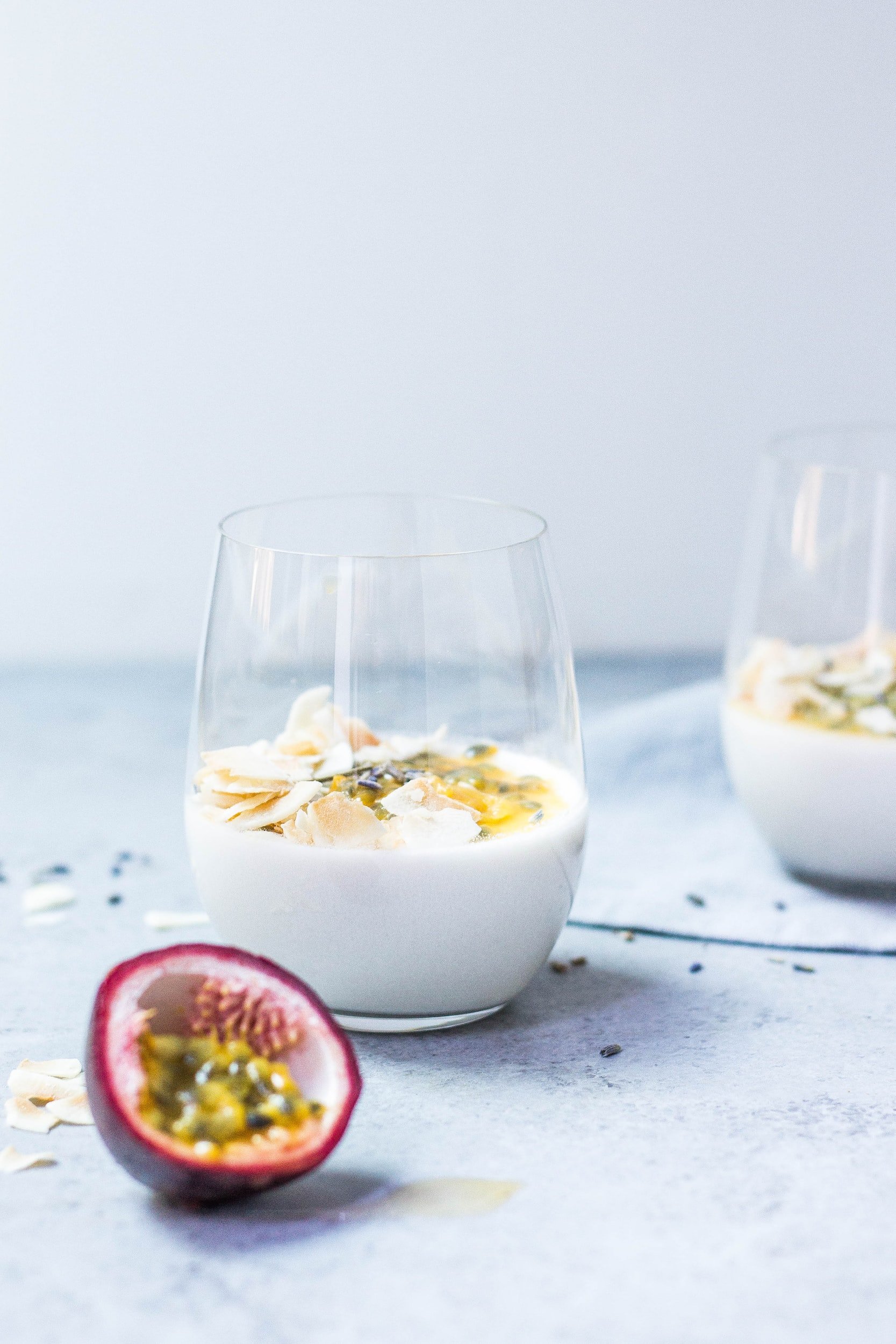Discover the Delicious World of Traditional German Breakfast: From Pastries to Drinks!
Germany is famous for its rich culture and traditions, including its delicious cuisine. One of the most interesting aspects of German cuisine is its breakfast. Traditional German breakfasts are hearty and filling, often featuring bread, meats, cheese, and eggs. In this article, we will explore the various types of traditional German breakfasts, including their history, preparation, and cultural significance.
Traditional German Breakfast Food
Bread and Rolls
Bread is a staple of German cuisine, and it plays a crucial role in German breakfasts. Germans love their bread, and there are over 300 types of bread in Germany. From crusty sourdough bread to soft white bread, Germans have an affinity for all kinds of bread.
The most popular type of bread for breakfast is the Brötchen, a small crusty roll. Brötchen is usually eaten with butter, cheese, jam, or honey. Germans usually have a variety of bread on their breakfast table, including Vollkornbrot, a dense and hearty whole-grain bread, and Bauernbrot, a dense rye bread. This is certainly a must-eat with German breakfast foods.
Cold Cuts and Cheese
Another essential part of a traditional German breakfast is cold cuts and cheese. Germans love their meat, and the breakfast table is usually filled with different types of cold cuts, including ham, salami, and mortadella. Cheese is also a popular addition to the breakfast table, with Emmental, Gouda, and Brie being some of the most popular varieties. German breakfast foods always include sliced meats and cheese!
Muesli and Yogurt
While Germans may be known for their love of meat and bread, they also have a healthy side. Muesli, a mixture of oats, nuts, and dried fruit, is a popular breakfast dish in Germany. It’s also often common to top this dish with fresh in-season berries. Muesli is usually served with yogurt, milk, or fruit juice. Germans also enjoy yogurt on its own, and it is a popular German breakfast food.
Eier (Eggs)
Eggs are also an essential part of a traditional German breakfast food. There are many ways to prepare eggs in Germany, but the most common way is to make them sunny-side up or scrambled. Germans often add ham, bacon, or sausage to their eggs, making it a hearty breakfast.
Another popular way to prepare eggs for breakfast in Germany is to soft boil them and them serve and eat in an eggcup. You use a spoon and eat the egg from the top.
Weißwurst and prezels for breakfast.
Würste (Sausages)
Sausages are a big part of German cuisine, and they are sometimes served for breakfast in Bavaria. The most popular sausages for breakfast are Weißwurst and Bratwurst. Weißwurst is a traditional Bavarian sausage made from veal and pork. It is usually served with sweet mustard, a pretzel. Bratwurst is a grilled pork sausage that is often served with sauerkraut and mustard. The combination of these items are also served with Obatzda, which is a traditional Bavarian cheese spread. Obatzda has a rich and savory flavor, and the creamy texture of the cheese makes it easy to spread on bread or pretzels.
Pancakes and Waffles
Pancakes and waffles are not as common in German breakfasts as they are in American breakfasts, but they are still popular. German pancakes, also known as Pfannkuchen, are thinner than American pancakes and are usually served with jam or fruit. Waffles, also known as Waffeln in German, are usually served with whipped cream and fruit.
In addition to the traditional German breakfast foods mentioned above, there are many more examples of dishes that are popular for breakfast in Germany.
Sour Cream and Herb Dip
Sour cream and herb dip, or Kräuterquark, is a popular spread for breakfast in Germany. It is made from a mixture of sour cream, quark (a type of soft cheese), and a variety of herbs such as chives, parsley, and dill. Kräuterquark is usually spread on bread or rolls and served with cold cuts and cheese.
Bismarckheringsalat (Herring Salad)
Herring salad, or Bismarckheringsalat, is a breakfast dish in northern Germany. It is made from pickled herring, potatoes, onions, and apples, all finely chopped and mixed together. The salad is usually served on bread or rolls. This is arguably not the most popular breakfast dish, but it can be found sometimes in Northern Germany.
Leberwurst (Liverwurst)
Liverwurst, or Leberwurst in German, is a type of sausage made from liver, pork, and spices. It is a popular breakfast item in Germany and is usually spread on bread or rolls. Liverwurst is often served with mustard and pickles.
Butterbrezel (Butter Pretzel)
Butterbrezel is a soft pretzel that is filled with butter. It is a popular breakfast food in southern Germany and is often served with coffee or tea. The pretzel is usually split in half and spread with butter before being eaten.
Where we live in Freiburg, this is something that can be found at every bakery. I am a sucker for these every now and then.
Spargelrührei (Scrambled Eggs with Asparagus)
Scrambled eggs with asparagus or Spargelrührei, is a popular breakfast dish in Germany during asparagus season. The dish is made by scrambling eggs with chopped asparagus, butter, and salt and pepper. It is usually served with bread or rolls.
Bircher Muesli
Bircher Muesli is a Swiss invention, but it has become a popular breakfast item in Germany as well. It is made from oats, yogurt, milk, honey, and grated apple. The mixture is chilled overnight and is usually served with fresh fruit and nuts.
Quark mit Obst (Quark with Fruit)
Quark with fruit, or Quark mit Obst in German, is a popular breakfast food in Germany. Quark is a type of soft cheese that is similar to cottage cheese or ricotta. It is often mixed with fresh fruit, such as strawberries, blueberries, or raspberries, and a bit of sugar or honey for sweetness. This breakfast is a light and refreshing option that is perfect for summer.
Schnitzel mit Ei (Schnitzel and Eggs)
Schnitzel and eggs, or Schnitzel mit Ei, is a breakfast dish that is more commonly served in Austria but is also popular in some parts of Germany. It is made by serving a breaded and fried pork or veal schnitzel with a fried egg on top. It is a hearty and filling breakfast that is perfect for those who need a lot of energy in the morning.
Pumpernickel with Cream Cheese and Cucumber
Pumpernickel with cream cheese and cucumber, or Pumpernickel mit Frischkäse und Gurke, is a simple yet delicious breakfast that is popular in Germany. Pumpernickel is a dense and dark bread that is made from rye flour. It is often topped with cream cheese and slices of cucumber, which add a refreshing crunch to the dish.
Roggenbrei (Rye Porridge)
Rye porridge, or Roggenbrei, is a warm and comforting breakfast that is popular in Germany during the colder months. It is made from rye flour, milk, and sugar and is often flavored with cinnamon or vanilla. The porridge is served hot and is usually topped with a pat of butter and a sprinkle of sugar.
Bratkartoffeln (Fried Potatoes)
Bratkartoffeln, or fried potatoes, is a popular breakfast side dish in Germany. The potatoes are sliced and fried until they are crispy and golden brown. They are often served with eggs and cold cuts or with a side of apple sauce or ketchup.
Obatzda
Obatzda is a Bavarian cheese spread that is often served for breakfast. It is made from camembert cheese, butter, sweet paprika, and beer. The cheese is mashed with the other ingredients until smooth and creamy. It is served with bread or pretzels and is a popular breakfast food in southern Germany. You will also see this in Bavaria on special occasions served with a Weißwurst and pretzels.
Kaiserschmarrn
Kaiserschmarrn is a sweet breakfast dish that is popular in Austria and southern Germany. It is made from a pancake batter that is cooked until golden brown and then torn into small pieces. The pieces are then caramelized in butter and dusted with powdered sugar. Kaiserschmarrn is often served with a fruit compote, such as plum or apple, and is a delicious and indulgent breakfast option.
As good as this can be as a breakfast option, it is also often a dessert choice at dinner in Germany and Austria.
Birnen, Bohnen und Speck (Pears, Beans, and Bacon)
Birnen, Bohnen und Speck, or pears, beans, and bacon, is a breakfast dish that is popular in western Germany. It is made from sautéed pears, green beans, and bacon. The dish is often served with bread or rolls and is a hearty and flavorful breakfast option.
Eierpfannkuchen (Egg Pancakes)
Eierpfannkuchen, or egg pancakes, is a breakfast dish that is popular in northern Germany. It is made from a pancake batter that is mixed with eggs and then cooked in a frying pan. The pancakes are often served with jam or syrup and are a sweet and satisfying breakfast option. In addition to breakfast, these can also be served later in the day with coffee.
Kartoffelomelette (German Potato Omelette)
A German potato omelette, also known as a Kartoffelomelette, is a traditional dish from that is typically served for breakfast or brunch. The dish consists of thinly sliced potatoes that are cooked in a pan until tender, then combined with beaten eggs and cooked until the eggs are set. The omelet is usually seasoned with salt, pepper, and fresh herbs like chives or parsley. It can be served on its own or with a side of bread and cold cuts.
German potato omelettes are a hearty and satisfying breakfast option that are popular throughout Germany. They are often served in small portions as part of a larger breakfast spread, alongside other traditional dishes like cold cuts, cheeses, and breads. They are easy to make and can be customized with different herbs and seasonings, making them a versatile option for any meal of the day.
Apfelpfannkuchen (German Apple Pancakes)
OK, so it’s not clear to us if this should be in ‘Traditional German Breakfast Foods’ or in ‘German Breakfast pastries.’ Honestly, it could be ordered for both.
German Apple Pancakes, also known as Apfelpfannkuchen, are a delicious and indulgent breakfast option that are popular throughout Germany. These pancakes are thinner than American pancakes and include sliced apples cooked into the batter, giving them a unique and fruity twist. They are typically served hot and topped with powdered sugar or cinnamon-sugar, whipped cream, or syrup.
To make German Apple Pancakes, a batter is first prepared by whisking together flour, eggs, milk, and a pinch of salt. Sliced apples are then added to the batter and mixed well. The batter is poured into a hot, greased pan and cooked until the pancake is golden brown on both sides. The finished pancake is then cut into slices and served immediately.
If you're looking for a delicious and indulgent breakfast option, German Apple Pancakes are definitely worth trying. They are versatile and can be customized to suit individual tastes, making them a great option for any occasion. Whether you top them with whipped cream, syrup, or cinnamon-sugar, these pancakes are sure to be a hit at your next breakfast or brunch gathering.
We hiked up a mountain in the Black Forest (Schauinsland) to try a traditional German brunch. Check it out here!
Want to learn more about northern Germany’s most popular foods? Check out our video here!
Traditional German Breakfast Pastries
When it comes to traditional German breakfasts, pastries are a staple. From flaky croissants to fruit-filled danishes, German breakfast pastries are delicious, satisfying, and a true reflection of the country's rich culinary heritage. In this section, we will explore some of the most popular German breakfast pastries and discuss their history and origins.
And don’t worry, these German desserts are sometimes breakfast replacements or popular German snacks, which are available all day long. No need to only order them at your breakfast.
Croissants
Croissants are a French invention, but they have become a popular breakfast pastry in Germany as well. These buttery, flaky pastries are perfect for a light and satisfying breakfast. They are often served with jam, Nutella, or honey, and are a great way to start the day on a sweet note.
At German bakeries, these can often be found with seeds, chocolate and/or powdered sugar on top. Also, chocolate on the inside!
Stollen
Stollen is a traditional German fruit bread that is often enjoyed during the Christmas season. It is made from a yeasted dough that is filled with raisins, candied orange and lemon peel, almonds, and spices. Stollen is often dusted with powdered sugar and served sliced with butter for breakfast. The history of Stollen dates back to the Middle Ages when it was created by bakers in Dresden. Today, it is a beloved holiday treat throughout Germany. It is often eaten later in the day, but it is something you can find at local bakeries and at markets to pair with a coffee.
Danishes
Danishes, or Kopenhagener in German, are a popular breakfast pastry that can be found in bakeries throughout Germany. They are flaky and buttery, with a sweet and tangy filling of fruit or cream cheese. Danishes can be enjoyed plain or with a cup of coffee or tea. They are a popular option for breakfast on the go, and many Germans will pick up a Danish from their local bakery on their way to work or school. These popular German desserts will leave you wanting more!
Bienenstich
Bienenstich, which translates to "bee sting," is a popular German breakfast pastry that is made from a yeast dough and filled with a sweet and creamy custard. The pastry is topped with caramelized almonds and often drizzled with honey, giving it its name. Bienenstich is a rich and indulgent pastry that is perfect for a special occasion or a leisurely weekend breakfast.
Pain au Chocolat
Pain au chocolat is another French pastry that has become a popular breakfast option in Germany. It is a flaky, buttery pastry that is filled with a rich and creamy chocolate filling. Pain au chocolat is often served with a cup of coffee or tea and is a great way to indulge in something sweet and satisfying for breakfast.
Mohnschnecke
Mohnschnecke, or poppy seed snail, is a traditional German breakfast pastry that is made from a yeast dough and filled with a sweet poppy seed paste. The pastry is rolled into a spiral shape, resembling a snail, and is often topped with powdered sugar. Mohnschnecke is a rich and indulgent pastry that is perfect for a special occasion or a leisurely weekend breakfast.
Hefezopf
Hefezopf, or Mare, is a traditional German sweet bread that is often enjoyed for breakfast. It is made from a yeast dough that is braided and brushed with an egg wash before being baked until golden brown. It is typically baked with or without raisins. Hefezopf is often flavored with vanilla or lemon and can be enjoyed plain or with butter and jam. It is a hearty and satisfying breakfast pastry that is perfect for sharing with friends and family.
Berliner (Jelly-filled Doughnuts)
Berliner, or jelly-filled doughnuts, are a popular breakfast pastry in Germany. They are often filled with jam or jelly and dusted with powdered sugar. Berliner can be enjoyed with a cup of coffee or tea, and are a great way to start the day on a sweet note. Or, a great German dessert to have at lunch.
Nussecken
Nussecken, or nut triangles, are a popular German breakfast pastry that are made from a shortcrust dough and filled with a mixture of nuts and apricot jam. The pastry is baked until golden brown and then cut into triangular shapes. Nussecken are sometimes dusted with powdered sugar and are a sweet and satisfying way to start the day.
Lebkuchen (Gingerbread)
Lebkuchen is a traditional German gingerbread that is often enjoyed for breakfast during the holiday season. It is made from a mixture of honey, spices, and flour and can be flavored with nuts or dried fruit. Lebkuchen is often decorated with icing or candied fruit and is a sweet and festive way to start the day.
Quarkbällchen (Doughnut Holes)
Quarkbällchen, or German-style doughnut holes, are a popular breakfast pastry in Germany. They are made from a mixture of quark, flour, eggs, and sugar, and are fried until golden brown. Quarkbällchen are often dusted with powdered sugar and are a sweet and satisfying way to start the day.
Apfelkuchen (Apple Cake)
Apfelkuchen, or apple cake, is a traditional German breakfast pastry that is made from a yeasted dough and filled with sliced apples, cinnamon, and sugar. The pastry is often dusted with powdered sugar and is a sweet and satisfying way to start the day. Apfelkuchen is often enjoyed with a cup of coffee or tea and is a popular choice for breakfast in Germany.
Zimtschnecken (Cinnamon Rolls)
Zimtschnecken, or cinnamon rolls, are a popular breakfast pastry in Germany. They are made from a yeast dough that is rolled out, spread with butter and cinnamon, and then rolled into a spiral shape. The pastry is then baked until golden brown and served warm. Zimtschnecken are often topped with a sweet glaze and are a delicious and indulgent way to start the day.
Marmorkuchen (Marble Cake)
Marmorkuchen, or marble cake, is a traditional German breakfast pastry that is made from a mixture of vanilla and chocolate cake batter that is swirled together to create a marbled effect. The cake is often dusted with powdered sugar and is a sweet and satisfying way to start the day. Marmorkuchen is often enjoyed with a cup of coffee or tea and is a popular choice for breakfast in Germany.
Traditional German Breakfast Drinks
When it comes to traditional German breakfasts, drinks are just as important as the food. Germans take their breakfast beverages seriously, and there are a variety of options to suit any taste. From coffee to tea to fruit juice, traditional German breakfast drinks are refreshing, invigorating, and a great way to start the day. In this article, we will explore some of the most popular German breakfast drinks and discuss their history and origins.
Coffee
Coffee is a staple in German breakfast culture. Germans take their coffee seriously and it is not uncommon to find a range of coffee options on the breakfast table. From espresso to cappuccino to latte, Germans have a love affair with coffee. It is often enjoyed with a piece of cake or a pastry and is a great way to start the day. German coffee is known for its strong and rich flavor, and many Germans prefer to enjoy it black or with just a splash of milk.
Tea
Tea is also a popular choice for breakfast in Germany. Germans love to drink black tea, green tea, and herbal tea in the morning. Often, the tea is served with a slice of lemon or honey for sweetness. Tea is a great alternative to coffee for those who don't like the taste of coffee or who are looking for a more relaxing breakfast beverage.
Orange Juice
Orange juice is a common breakfast drink in Germany. Freshly squeezed orange juice is often served alongside breakfast, especially during the winter months when citrus fruits are in season. Orange juice is a refreshing and healthy way to start the day. Germans often prefer to drink their orange juice with pulp, as it is believed to be healthier.
Buttermilk
Buttermilk, or Saure Milch, is a popular breakfast drink in Germany. It is a fermented dairy product that has a slightly sour taste. Germans often drink buttermilk in the morning as a way to help settle the stomach and to promote digestion. Buttermilk is often enjoyed plain or mixed with fruit juice for sweetness.
Beer
While not as common as coffee or tea, beer is occasionally served at a traditional German breakfast. It is more likely to be served at a weekend or holiday brunch or during a special occasion like Oktoberfest. Germans take their beer seriously, and many regional breweries produce a range of beers that are suitable for breakfast.
In Bavaria, Weisswurst is often served with a pretzel and beer, which is often alcohol free (Alkoholfrei.
Heiße Schokolade (Hot Chocolate)
Hot chocolate, or heiße Schokolade in German, is a popular breakfast drink in Germany. It is a rich and indulgent way to start the day, and many Germans enjoy it with a piece of cake or a pastry. German hot chocolate is often made with real chocolate and is served with whipped cream on top for added decadence.
Kefir
Kefir is a fermented milk drink that is similar to yogurt. It has a tangy flavor and is often enjoyed as a breakfast drink in Germany. Kefir is believed to have many health benefits, including aiding digestion and promoting gut health. It can be enjoyed plain or mixed with fruit for sweetness.
Tomato Juice
Tomato juice is a common breakfast drink in Germany. It is often served alongside a savory breakfast like cold cuts or cheese. Germans often add a pinch of salt and black pepper to their tomato juice for added flavor. Tomato juice is a refreshing and healthy way to start the day and is often enjoyed as a way to hydrate after a night of drinking.
Milk
Milk is a simple and classic breakfast drink in Germany. It is often served cold alongside breakfast and can be enjoyed plain or mixed with chocolate or strawberry syrup for added sweetness. Milk is a great way to start the day with a dose of calcium and protein.
Interested in learning more about popular German foods? Read more about common foods in the Black Forest region of Germany here!
Conclusion
In conclusion, traditional German breakfasts are rich and filling, featuring a variety of bread, meats, potatoes, cheese, and eggs. There are many popular dishes for breakfast in Germany, including Kräuterquark, herring salad, liverwurst, Butterbrezel, scrambled eggs with asparagus, and Bircher Muesli. These dishes are often regional and vary throughout Germany, but they all share the same focus on hearty, satisfying breakfasts that will keep you fueled for the day ahead.
Traditional German breakfasts are as diverse and varied as the country itself. From savory options like Obatzda and Brezel to sweet dishes like Kaiserschmarrn and Eierpfannkuchen, there is a breakfast option to suit every palate. The use of fresh, locally sourced ingredients is at the heart of German breakfasts, and this commitment to quality and flavor is what sets traditional German breakfasts apart.
Traditional German breakfast pastries are a delicious and indulgent way to start the day. From sweet options like Quarkbällchen, Apfelkuchen, and Marmorkuchen to cinnamon-filled Zimtschnecken, there is a breakfast pastry to suit every taste. Germans take their pastries seriously, and many regional bakeries produce a range of breakfast pastries that are suitable for any occasion. Whether you are looking for something simple and satisfying or a sweet and indulgent treat, there is sure to be a traditional German breakfast pastry that will meet your needs.






















